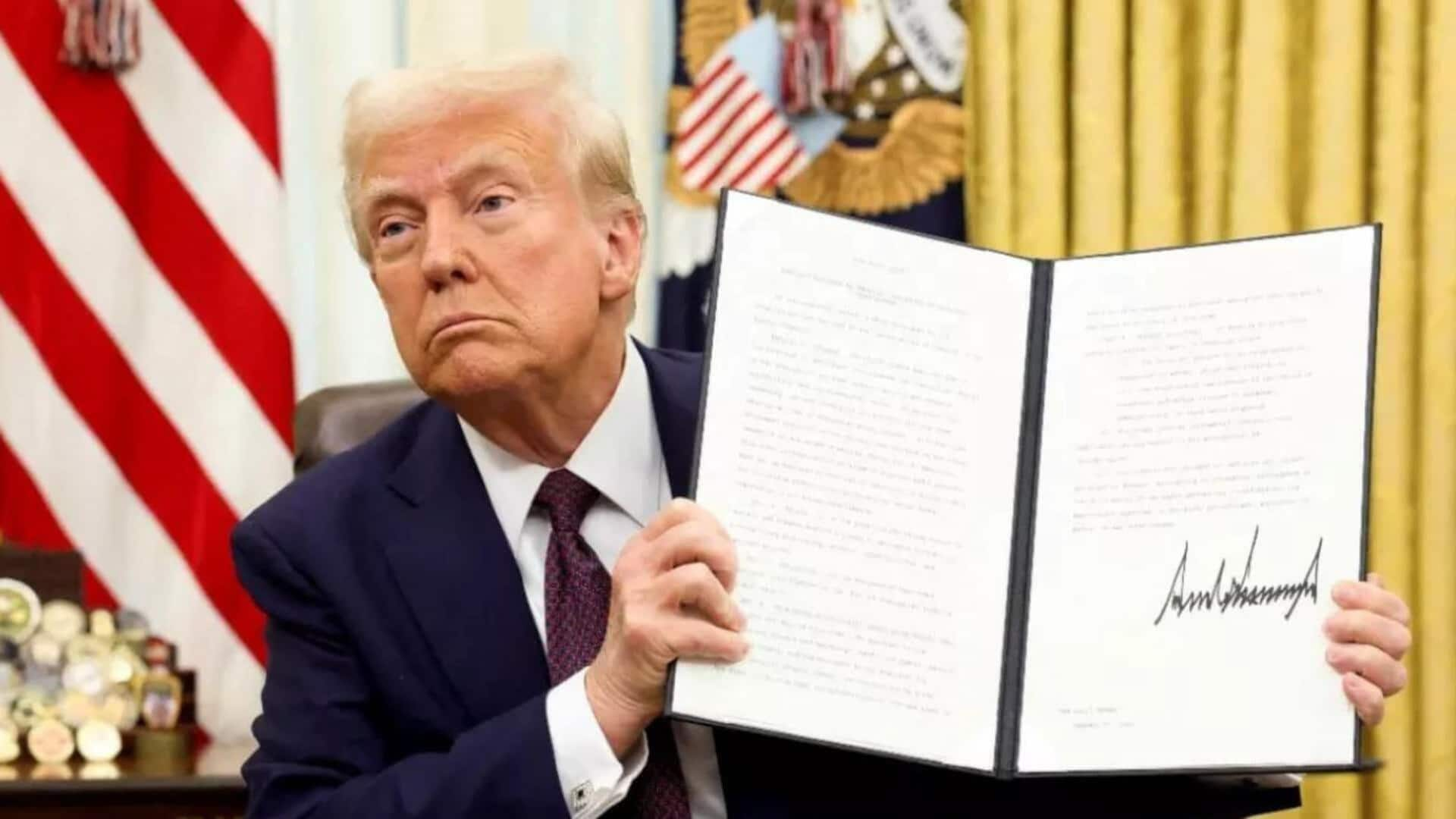
Why Trump's tariffs face a Supreme Court challenge
What's the story
President Donald Trump's strategy to reduce the US budget deficit through tariff hikes is facing a potential legal setback. The move, which has so far generated an additional $165 billion for the Treasury Department in fiscal year 2025, is now under scrutiny after an August 29 federal appeals court ruling questioned its legality. If the Supreme Court doesn't rule in favor of this strategy, it could lead to major refund liabilities for the government.
Case
What is being challenged
Trump issued sweeping tariffs under his second presidential term, implementing broad levies on imports from many countries. These include the so-called "Reciprocal Tariffs" and "Trafficking & Immigration Tariffs," among others. The legal challenge claims these tariffs were imposed under the International Emergency Economic Powers Act (IEEPA). Plaintiffs—including small businesses and a coalition of states—argue Trump overstepped his authority by using emergency powers to impose tariffs—a power they say Congress never granted in that law.
Viewpoints
What lower courts have decided so far
In May 2025, the U.S. Court of International Trade (CIT) ruled that many of those tariffs exceeded presidential authority under IEEPA, declaring them unlawful. Then, in late August, the Federal Circuit Court of Appeals agreed, holding in V.O.S. Selections, Inc. v. Trump that IEEPA does not authorize the president to impose tariffs on such a sweeping scale. However, these lower-court decisions remain stayed (put on hold) while the government appeals.
Key pointssds
Constitutional and legal issues at stake
At the heart of the legal battle over Trump's tariffs are key constitutional principles. Critics argue the tariffs breach the separation of powers, since the Constitution grants Congress—not the president—the authority to levy duties. Courts are also weighing whether the IEEPA was ever meant to authorize tariffs of such sweeping scope, or only in limited emergencies. Among other major questions, judges are also scrutinizing whether Congress clearly delegated this level of executive authority on trade and international relations.
Uncertainty factors
Legal uncertainty could lead to policy responses
The legal uncertainty surrounding Trump's tariff strategy could prompt policy responses from the administration if the court case goes against them. Lou Crandall, chief economist at Wrightson ICAP, said it is a "wild card" that will have to be dealt with when the time comes. He added that if the administration wants to avoid further deficit growth, there will be some sort of policy response but its exact nature remains unknown.
Revenue analysis
Tariff revenue falls short of addressing budget gap
Despite the additional tariff revenue, it still falls short of closing the nearly $2 trillion budget gap for the first 11 months of fiscal year 2025. However, some economists support Treasury Secretary Scott Bessent's prediction that this could translate into a current run-rate of about $300 billion or more annually. This would be roughly 1% of US gross domestic product (GDP) and could help significantly reduce deficits over the next decade.
Business impact
Businesses frustrated by changing US duties
The changing US duties have frustrated many businesses, including Hand2mind Inc., which makes educational toys. Elana Ruffman, a marketing executive at the company, said they had to shift production from China to India due to Trump's tariffs. However, despite these efforts and costs incurred in the process, they ended up paying higher tariffs than if they had continued production in China. This is because Trump last month jacked up the US surtax on Indian imports to 50%.
Legal implications
Ruffman among those suing Trump administration over tariffs
Ruffman and her company are among those suing the Trump administration over its use of IEEPA to impose tariffs. The case is now awaiting Supreme Court review. If these tariffs are invalidated, Yale Budget Lab estimates a potential revenue loss of about $1.5 trillion over a decade, leaving remaining levies collecting $496 billion. This could remind bond investors of the broader fiscal path despite economists predicting higher long-term revenue collection for the US.
Key points
What the Supreme Court will decide
The Supreme Court has agreed to hear the case in early November. The justices must rule on whether IEEPA can lawfully support the vast tariff measures Trump imposed. If the Court upholds the lower courts, many tariffs may be struck down as unconstitutional. There's also the possibility the Court could require the government to refund some of the collected tariffs—potentially a large sum. The outcome could reshape the balance between executive power and Congress in setting trade policy.